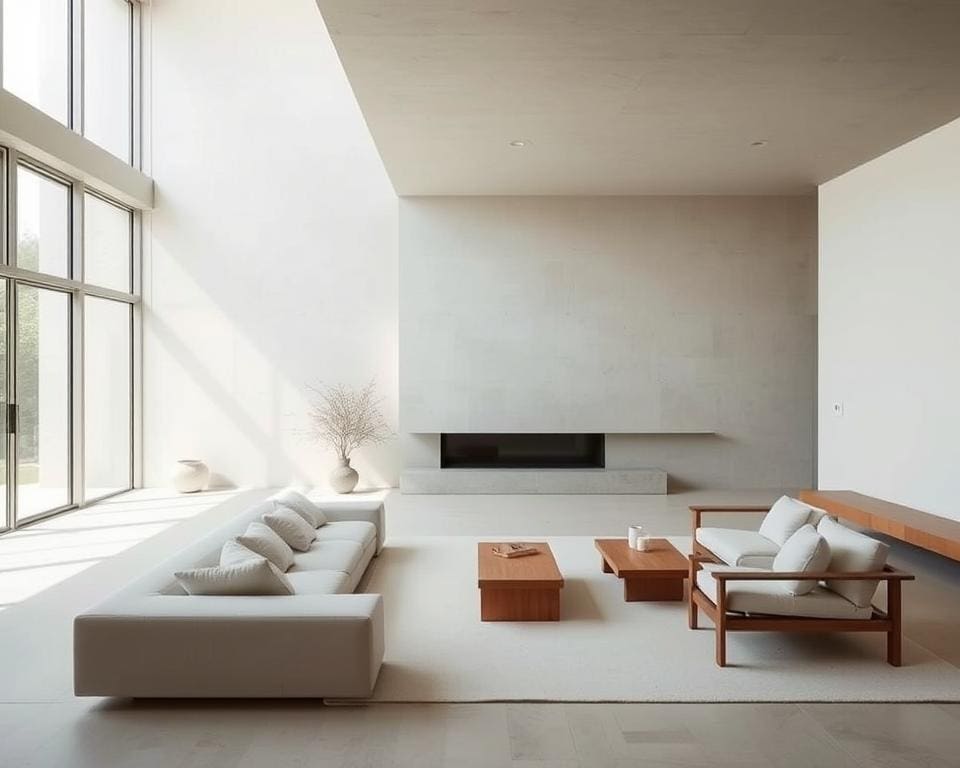John Pawson stands as a towering figure in the realm of contemporary design, renowned for his distinctive approach to minimalism in British architecture. His artistic vision encapsulates the principles of simplicity, purity, and clarity, setting a benchmark for modern architectural aesthetics. Pawson’s projects, ranging from private homes to public spaces, seamlessly blend form and function, significantly influencing the architectural landscape in the UK and beyond.
By drawing inspiration from a plethora of cultural references, Pawson has crafted an architectural style that resonates with the ethos of minimalism in British architecture. His work is not just about reducing clutter; it celebrates the elegance of simplicity, establishing a new narrative in contemporary design that challenges traditional norms. With each project, Pawson invites us to reconsider our relationships with space and environment, epitomising a sophisticated yet accessible aesthetic.
The Vision of John Pawson
John Pawson stands as a prominent figure in the realm of British architecture, celebrated for his profound commitment to minimalism. His unique design philosophy emerges from a rich background filled with diverse influences that have shaped his approach to creating thoughtfully designed spaces.
Background and Early Influences
In the 1970s, john pawson embarked on his architectural journey, gaining invaluable insights through extensive travels across various cultures. His education at the Architectural Association School of Architecture in London was instrumental in providing the foundation for his later works. The transformative experience of spending time in Japan deeply influenced his understanding of simplicity and the power of minimalism in design.
Pawson’s Design Philosophy
At the core of pawson’s design philosophy lies a belief that true minimalism transcends mere emptiness. He seeks to create environments that encourage contemplation and a deeper appreciation of one’s surroundings. Every element is selected with care, promoting a sense of harmony and balance. This thoughtful approach redefines the essence of spaces, allowing occupants to connect emotionally and spiritually with their environment.

John Pawson: Minimalism in British Architecture and Design
Understanding minimalism in architecture requires a thoughtful exploration of form and space. This architectural style champions simplicity, stripping away unnecessary elements to reveal beauty in purity. John Pawson exemplifies this ethos, demonstrating how minimalism in British architecture can create immersive environments that inspire calmness and clarity.
Defining Minimalism
The essence of minimalism lies in its focus on the fundamental qualities of a space. It invites one to appreciate the interplay of light, shadow, and material without distraction. In practice, this translates to clean lines, open spaces, and a deliberate selection of materials that work synergistically to convey an architectural vision. Such sensitivity in design allows for contemplation and connection with the surroundings, making minimalism a powerful tool in contemporary design.
Examples of Pawson’s Masterpieces
Among Pawson’s remarkable contributions is the Gap House in London. This residential project skillfully integrates minimalism with functionality, achieving an inviting atmosphere through strategic use of light and space. Another highlight is the Novy Dvur Monastery in the Czech Republic, which showcases the profound tranquillity that minimalism can evoke in sacred spaces. Each of these creations stands as a testament to John Pawson’s mastery in harnessing the principles of minimalism, solidifying his stature within the narrative of minimalism in British architecture.
Impact on British Architecture
John Pawson’s influence on the realm of British architecture is both substantial and enduring. His distinct minimalist style has served as a beacon for contemporary design trends, encouraging architects to embrace simplicity and elegance in their work.
Shaping Contemporary Design Trends
Pawson’s work has significantly shaped contemporary design trends by advocating for a harmonious relationship between space and human experience. His philosophy centres on creating environments that foster interaction and reflection. Architects inspired by Pawson’s vision explore the nuances of light, texture, and proportion, offering an alternative to more ornate styles. The focus on minimalism facilitates a deeper connection to the surroundings, enriching the experience of those who occupy the spaces he has designed.
Collaboration with Other Architects
The collaborative projects undertaken by Pawson with various architects and designers have further enhanced his impact on British architecture. Notable collaborations include the interior design of the Calvin Klein flagship store in New York and the minimalist aesthetics found in London’s Design Museum. These partnerships not only amplify the unique attributes of his vision but also contribute to evolving architectural practices in the UK. Each collaboration highlights the significance of teamwork in redefining contemporary design, showcasing how innovative ideas can flourish when combined.
The Simple Aesthetic in Pawson’s Work
John Pawson’s artistry is a masterclass in creating a simple aesthetic that captures the essence of minimalism. His designs demonstrate a meticulous attention to detail, particularly through the careful selection of materials and texture choices. Each element serves a purpose, contributing to the overall harmony of the space.
Materials and Texture Choices
Pawson’s commitment to high-quality materials is evident in his work. He integrates natural resources such as stone, wood, and metal to establish a tactile connection with the environment. The texture choices play a pivotal role, inviting individuals to engage with the surfaces around them, cultivating a sense of warmth within minimalist spaces.
The Role of Light in Design
Light in design is another cornerstone of Pawson’s philosophy. He harnesses natural light to enhance the architectural form, using it as a dynamic element that transforms spaces throughout the day. Sunlight casts shadows and highlights, offering a visual rhythm that complements the materiality of his creations.
Balancing Functionality and Beauty
In Pawson’s approach, functionality and beauty coexist seamlessly. Every aspect of his buildings is carefully orchestrated to serve practical purposes while maintaining aesthetic appeal. This balance fosters an environment that promotes tranquillity and reflection, allowing occupants to appreciate both the functionality and beauty inherent in minimalist design.
Embracing Minimalistic Approach in Modern Living
The minimalistic approach championed by John Pawson offers profound insights into enhancing modern living. By promoting an ethos of simplicity, he encourages individuals to pare down physical possessions, which can foster improved mental clarity and overall wellbeing. In a world often cluttered with distractions, this philosophy resonates deeply, suggesting that a harmonious lifestyle stems from thoughtful curation of one’s environment.
Pawson’s designs serve as a powerful reminder that every element within our living spaces should have purpose and meaning. This alignment not only results in aesthetically pleasing environments but also contributes to a serene atmosphere that nurtures mindfulness. His vision invites both architects and homeowners to rethink their approaches, valuing the elegance of simplicity over the chaos of excess.
Ultimately, the essence of John Pawson’s work lies in his ability to inspire a shift towards minimalism in modern living. By embracing this approach, individuals are empowered to create spaces that promote tranquility and reflection. In an increasingly complex era, the beauty of minimal, well-designed spaces becomes a beacon, guiding us toward a more intentional and fulfilling lifestyle.









